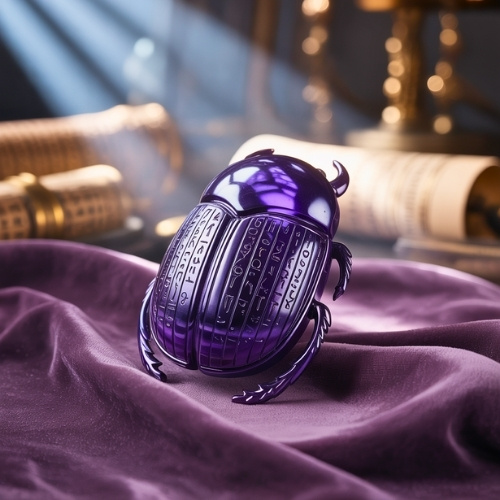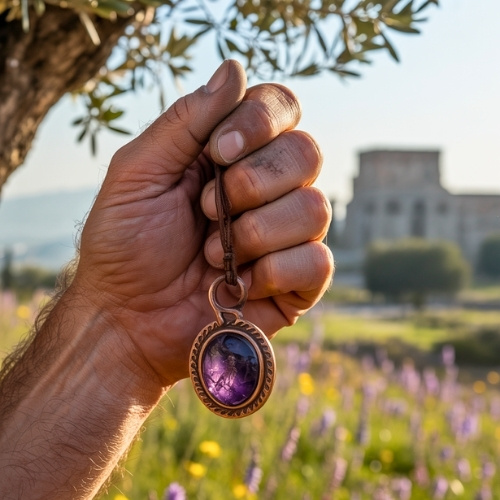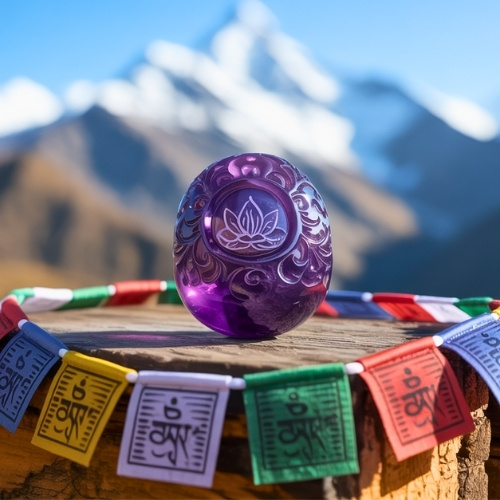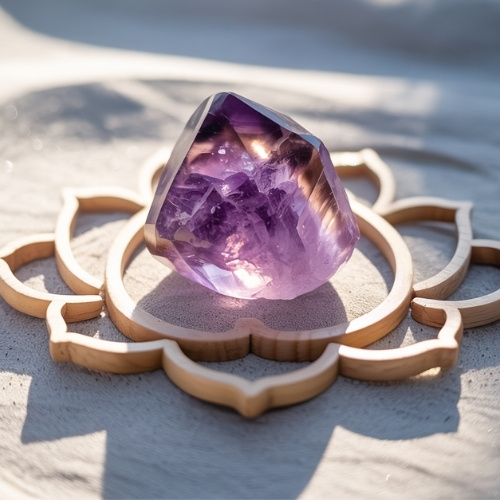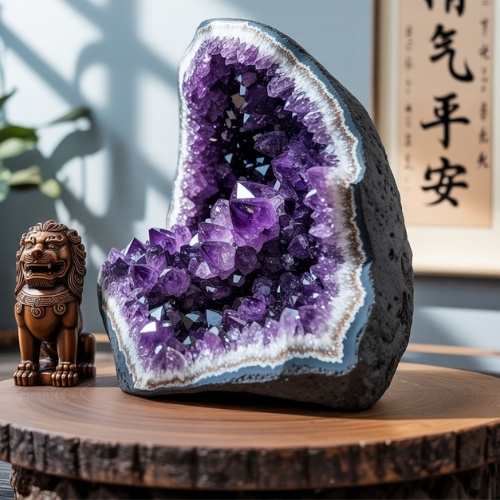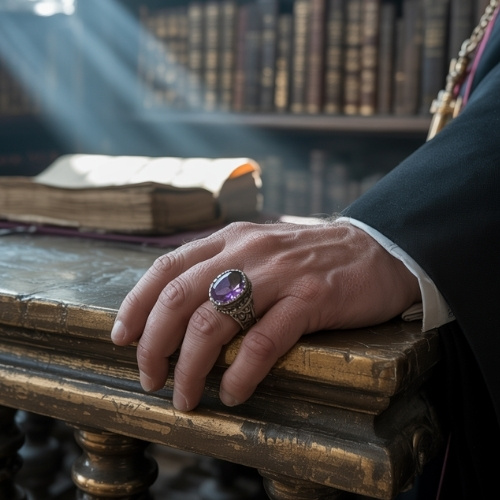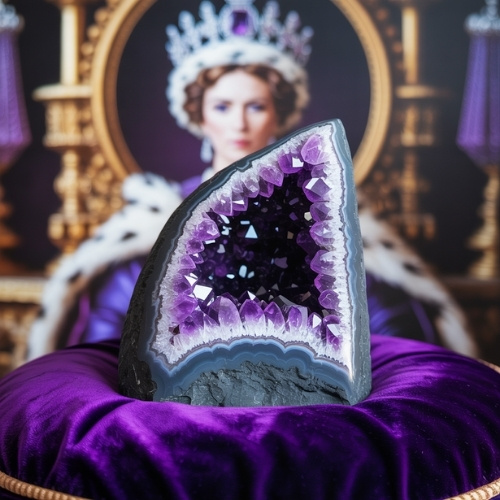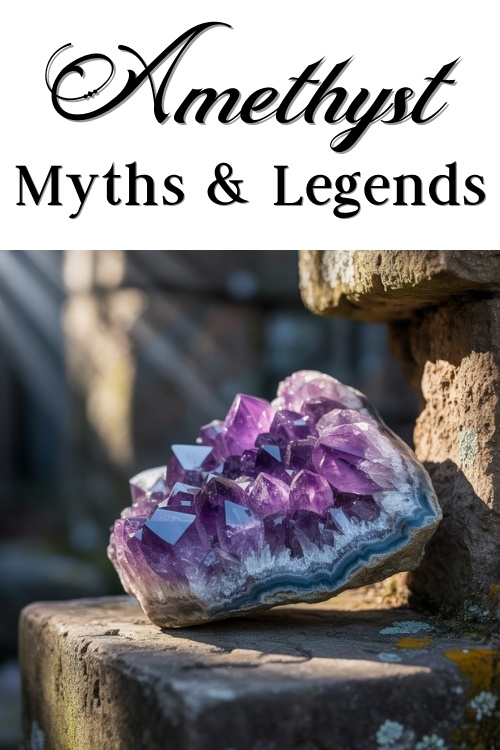Estimated reading time: 7 minutes
Amethyst has captivated cultures for centuries. Its striking purple hues and deep symbolism make it one of the most revered gemstones. Across civilizations, amethyst has been linked to protection, spirituality, and divine favour. From ancient myths to modern metaphysical uses, this gemstone has left an enduring mark on human history, inviting awe, admiration, and a little mystery along the way.
🔗These ancient stories often influence how we view amethyst today, from spiritual qualities to symbolic associations. Discover the full range of Amethyst’s meanings here
Jump to:
Amethyst’s Greek and Roman Origin Story
Perhaps the most famous amethyst tale is the Greek and Roman mythology about this gemstones creation.
It begins with Bacchus (Dionysus to the Greeks), the god of wine, who, in a fit of rage, vowed to punish the next mortal he encountered.
That unfortunate mortal was a maiden named Amethyst, on her way to worship at the temple of Diana (Artemis). To save her from the god’s wrath, the goddess transformed Amethyst into a statue of pure quartz. Given a moment to cool off, Bacchus was overcome with remorse. He poured his wine over the statue as a sign of his regret, staining it a deep purple. And thus, the gemstone we now know as amethyst was born.
This legend is thought to explain why amethyst was long believed to prevent intoxication. But in a wonderful plot twist, it turns out this story isn’t an ancient myth. It only dates back to the Renaissance ear and was written by the French poet Rémy Belleau in the style of an ancient myth. Despite amethyst sometimes being carved into goblets or warn as a talisman against drunkenness, no-one actually knows the origins of this gems connection to sobriety.
🔗 If you’re interested in a deeper dive into this fascinating tale, check out The Legend of Dionysus and Amethyst
Amethyst in Ancient Egypt
In Ancient Egypt, amethyst was more than a beautiful gem, it was a talisman against negative energy. Pharaohs and nobles wore it to summon courage, guard against harm, and channel strength.
Cleopatra herself reportedly had an amethyst signet ring, engraved with the Persian god of the divine idea. One reason she treasured it? Its supposed sobering power.
Egyptians also used amethyst in a charm to protect against sorcery and… gout. Yes, a curious combination. The charm involved tying an amethyst with a swallow feather around the neck, using a strand of peacock hair. Strange as it seems, it shows just how deeply symbolism was woven into everyday life in Ancient Egypt.
Amethyst and Roman Beliefs
Amethyst, being widely accepted as a gemstone of protection and courage in Ancient Rome, was a gem of choice for soldiers. But the Ancient Romes didn’t just believe in the powers of gemstones, they also believed different metals had various energies too.
Copper, which was closely associated with the goddess Venus, was thought to have protective and healing properties.
For a Roman soldier, an amethyst set in copper was the ideal talisman. Not only did the copper and amethyst offer their own individual protective energies, it was thought the metal would amplify the gemstones powers, making a copper and amethyst charm the ultimate battle companion.
Amethyst in Tibetan Buddhism
Tibetan monks have long revered amethyst as a sacred stone. It is often used in prayer beads (mala) to aid meditation and spiritual enlightenment.
The gemstone is believed to help calm the mind, enhance concentration, and deepen one’s spiritual connection. Even today, amethyst malas are widely used in Buddhist practices for their soothing and transformative properties.
Amethyst in Hinduism
In Hindu tradition, amethyst is tied to the crown chakra, the centre of spiritual awareness. It helps clear negative thoughts, encourages wisdom, and fosters peace and clarity during meditation. In essence, it’s a bridge between the earthly and the divine. A quiet companion on the path to higher consciousness.
Amethyst in Chinese Traditions
In China, amethyst has long been valued in Feng Shui for its ability to clear negative energy and restore balance. It is placed in homes and businesses to attract positive energy, protect from harm, and promote harmony in relationships.
Amethyst is also seen as both a guardian and a healer. A stone that nurtures the spirit while protecting the space around it.
Amethyst in Medieval Europe
During the Middle Ages, amethyst symbolised purity and devotion. Clergy members, including bishops, wore it as a sign of celibacy and divine wisdom.
Beyond its religious significance, medieval soldiers also carried amethyst amulets into battle, echoing the Roman practice. The gem was believed to grant protection, courage, and calm in the heat of war.
Amethyst and Royalty
Amethyst has long been associated with nobility. European royalty adorned crowns, scepters, and jewellery with it, using its rich purple hue to signify power, dignity, and divine favour.
Even today, amethyst remains a gemstone of choice for collectors and royalty alike, admired for both its beauty and its enduring symbolism.
A Timeless Gem
From ancient myths to modern spiritual practice, amethyst has held a revered place in human culture for millennia. Worn for protection, used for meditation, or simply admired for its beauty, this remarkable gemstone continues to inspire, enchant, and invite curiosity.
Just a quick side note – these amethyst myths and legends make great marketing content, so feel free to retell them to your audience!
🔗 Want some guidance on using gemstone knowledge to market your jewellery business? Read Using Gemstone Knowledge to Boost Your Jewellery Sales
🔗 Working with amethyst in your jewellery making? Take a look at my Jeweller’s Guide to Amethyst
🛍️ Curious to find a pre-owned amethyst for your next design? Check out what’s available.
📌 Save these amethyst myths and legends so you can easily find them again.


